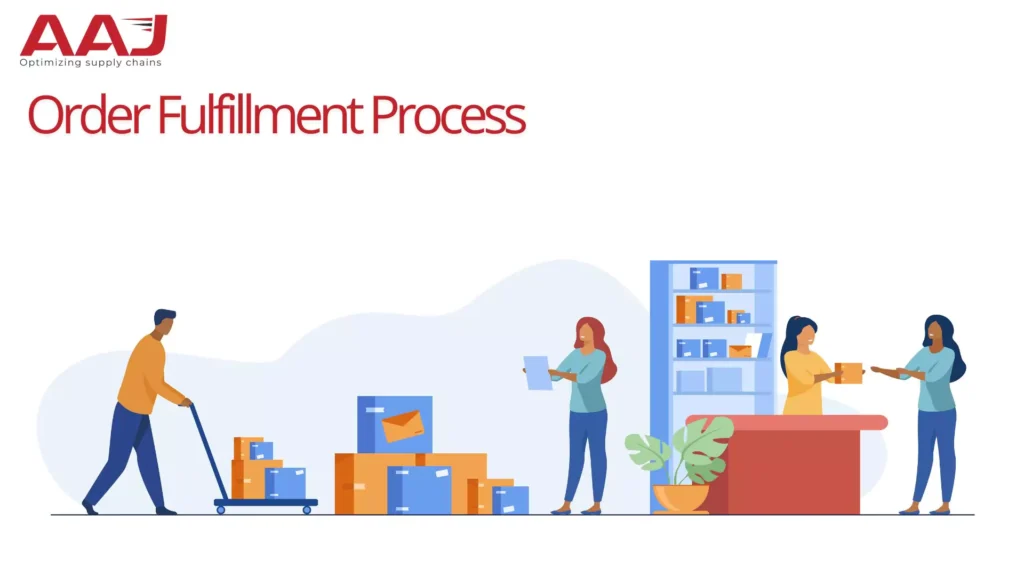In the fast-moving e-commerce space, order fulfillment comes up as a premier vital business aspect. But what is order fulfillment? Why is it so important in today’s fast-moving e-commerce realm? Its meaning goes beyond just processing orders; it’s about meeting consumers’ expectations smoothly. So, what does it take to outdo this significant aspect of business?
The much-advanced era of 2024 is shifting customer expectations from order fulfillment processes. From B2B to retail order fulfillment, businesses must stay real quick. Perceiving the order fulfillment procedure and learning how to maximize it can alleviate consumer experiences and profitability as well.
Therefore, in this comprehensive article today, we’ll take you on a deep dive into the sea of fulfillment while exploring multiple order fulfillment services and real-good tips on maximizing the entire procedure of your e-com business and powering up the longer game!
What is Order Fulfillment?
Let’s begin by first understanding the meaning of actual order fulfillment. To say In short, it is the comprehensive procedure that begins when a consumer places an order and ends with the delivery of that order successfully carried out to the customer’s doorstep.
In other simple words, it is the process of receiving, processing, and delivering orders to consumers. This crucial aspect can make or break the consumer gratification for any business. Therefore, every business prioritizes ensuring efficient fulfill Orders backed by timely and precise deliveries, keeping customers cheerful.
Types of Order Fulfillment Services
Even though there are many types of order fulfillment services available, each serves varying business requirements. Here are the primary types of order fulfillment services:
- In-House Fulfillment: In-House order fulfillment service manages all fulfillment internally for control, but it is a majority of resource-intensive and a little intricate as well.
- Third-Party Fulfillment (3PL): 3PL Logistics order fulfillment type refers to the outsourcing of the product receiving and its delivery to experts for better efficiency, scalability, and mitigated complexity.
- Drop Shipping: In this type, the supplier ships the orders directly to customers, mitigating stock costs and overhead.
- Hybrid Fulfillment: Hybrid Fulfillment refers to the activity of combining in-house and outsourced services for enhanced feasibility and personalized strategies.
Thus, to be in a profitable business, you must opt for the right order fulfillment service depending on your particular sort of business needs since it powers up the efficiency and customer satisfaction for your business a lot.
What is the Order Fulfillment Process?
The order fulfillment process refers to a multi-step journey from when a customer places an order to the end of delivery. Let’s take a short yet closer look at each stage of the order fulfillment process:
- Order Receipt: Order information gets recorded, and inventory availability is checked.
- Inventory Management: Tracking stock, managing restocking, and meeting customer needs.
- Order Picking: Precisely pick items from warehouse racks.
- Order Packing: Items get packed securely and labeled correctly.
- Shipping: Shipping is done employing suitable carriers, and tracking information is provided.
- Delivery: Timely and precise delivery to customers is ensured.
- Returns Processing: Receiving, inspecting, and restocking or disposing of returns occur.
Having an understanding of the order fulfillment process and carrying it out efficiently makes sure a seamless operation and uplifts customer gratification.
How to Improve Order Fulfillment Process?

Enhancing the order fulfillment process in any business is consistently the key to sustaining customer gratification and operational efficiency.
To enhance the order fulfillment process in your business, below are some given strategies:
- Automate Processes: Implement automation to mitigate errors and fasten inventory, order, and shipping logistics operations.
- Optimize Inventory Management: Employ advanced mechanisms to trace inventory in real-time, reducing costs and stockouts.
- Maximize Warehouse Organization: Systemize warehouses with trash locations, labeling, and racking for effective order picking.
- Enhance Order Precision: Coach your staff and bring barcode scanners into the system to mitigate errors and power up consumer satisfaction.
- Streamline Shipping: Utilize trustworthy carriers and software for best shipping rates and ways, powering up gratification.
- Concentrate on Consumer Communication: Constant updates and tracking info construct reliability and enhance consumer experience.
- Handle Returns Effectively: Streamline returns policy and process for rapid, hassle-free returns to power up loyalty.
By performing these strategies, you will be able to witness improvement in your entire order fulfillment operation, powering up efficiency and consumer satisfaction, which are also quite important for competitiveness.
How to Choose the Best Orders Fulfillment Services?
In today’s fast-paced universe, opting for the best order fulfillment services is very important for the success of your business. Consider the following factors to do the same:
- Evaluate Your Business Requirements: Get an understanding of order volume, product sorts, and customer regions.
- Technology and Integration: Make sure of smooth integration with your existing mechanisms.
- Scalability: Opt for a provider that can amplify alongside your business.
- Location and Coverage: Go for a provider with tactically located warehouse storage.
- Reputation and Authenticity: Study reviews and testimonials for trustworthiness.
- Consumer Service: Seek responsive and helpful customer aid.
- Cost: Do some comparison of pricing models while considering both viz. cost and quality of service.
- Returns Management: Make sure of efficient returns handling and clear policies.
Opting for the right fulfillment services uplifts the efficiency of your business alongside your consumer’s satisfaction, which is of course above all the crucial aspect for any business’ success.
In a Nutshell
To sum up, mastering order fulfillment is significant for any business and for the success of modern companies like e-commerce. By perceiving what order fulfillment is, exploring multiple order fulfillment services, and enhancing the order fulfillment process, businesses can increase efficiency and customer gratification.
As we are almost in the middle of 2024, leveraging technology and optimizing operations has turned out to be additionally essential. Therefore, do not ignore to invest in a steady fulfillment strategy to ensure timely and precise deliveries, increasing customer loyalty and business development.
Get a Hold of India’s Best Fulfillment Provider – AAJ Enterprises!
Finally, you know almost everything around the essential consideration of order fulfillment; it is time to choose the best order fulfillment service provider that holds the expertise, capability, and strategy to power up your business by extending the fostering of your order fulfillment aspect.
That’s where AAJ Enterprises stands out as the premier partner to streamline your warehouse logistics and increase customer satisfaction.
Whether it is the matter of B2B portal order fulfillment or retail order fulfillment, AAJ Enterprises remains the supreme leader in the logistics service industry in India which offers top-notch technology and processes effectively to handle your demands. In addition to this:
- Efficient and Reliable: Our top-notch, strategic warehouse management mechanism ensures timely and precise order delivery.
- Nationwide Network: Leverage our tactically located warehouses throughout core cities for quicker deliveries.
- Tech-Driven Solutions: Benefit from our cutting-edge technology for smooth stock and order management.
- Scalable Services: As your business develops, our scalable solutions develop with you, making sure of constant efficiency and customer gratification.
Want to figure out more about how we at AAJ Enterprises can power up your fulfillment process? Take it easy and simply get a hold of us today, and we’ll make sure to extend you the optimal services ever!
Frequently Asked Questions (FAQs):
Question: What’s the difference between B2B and retail order fulfillment?
Answer: Simply understand the difference between B2B order fulfillment and retail order fulfillment by this meaning that B2B manages large-volume orders for businesses, while retail concentrates on individual consumer orders.
Question: How can technology enhance the order fulfillment procedure?
Answer: Technology organizes stock management, order processing, and shipping, fostering precision and pace.
Question: Why is stock management significant in order fulfillment?
Answer: Effective stock management makes sure the availability of products, mitigating costs and preventing stockouts.



